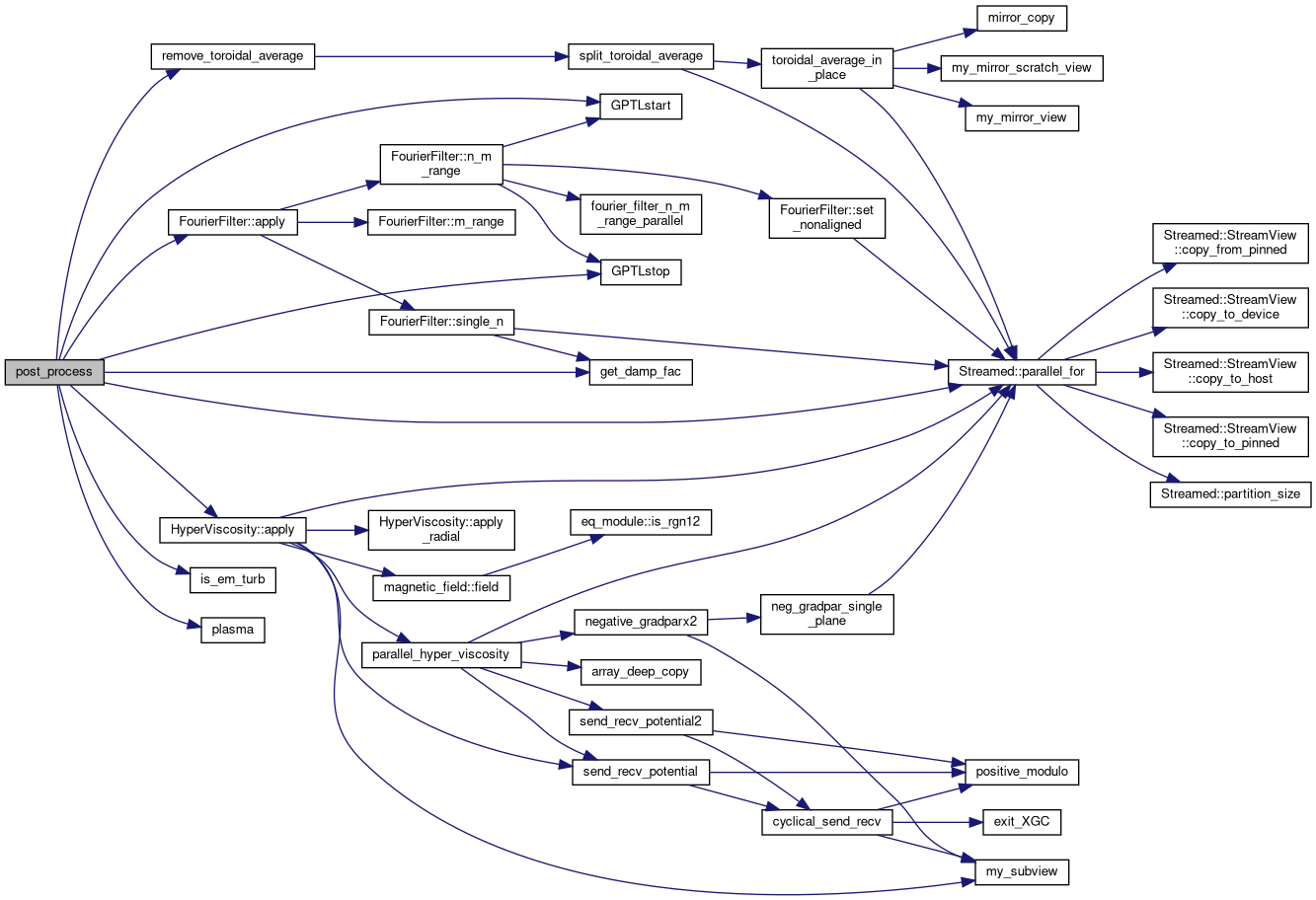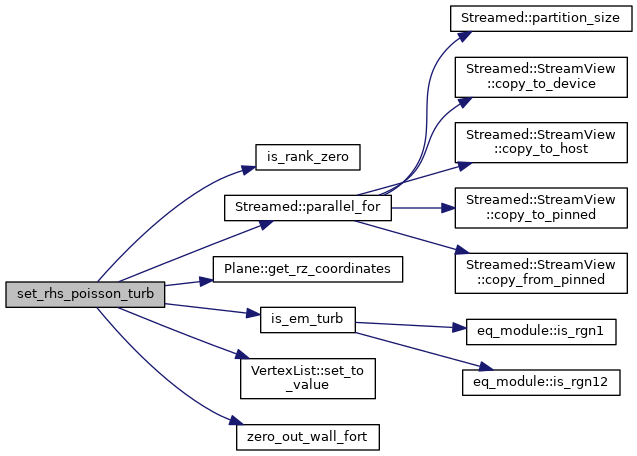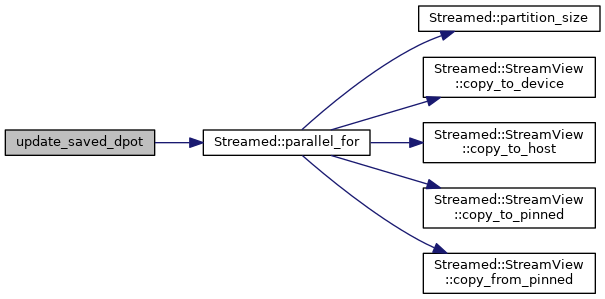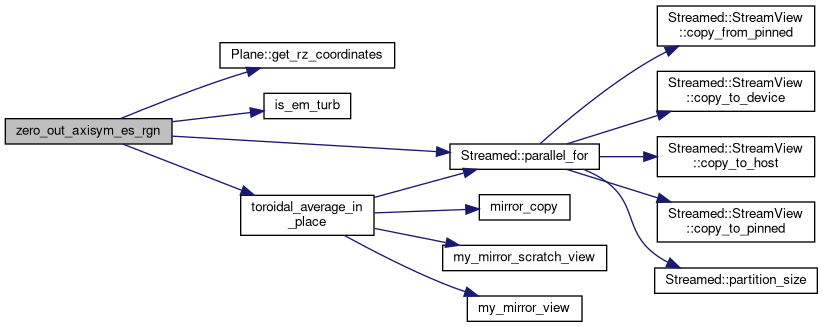#include "my_subview.hpp"#include "send_recv_potential.hpp"#include "fourier_filter.hpp"#include "toroidal_average.hpp"#include "solvers.hpp"
Include dependency graph for solve_poisson_turb.cpp:

Functions | |
| void | cce_poisson_turb (int adiabatic_int, Field< VarType::Scalar, PhiInterpType::None > *pot0) |
| int | get_solverH_nbndry () |
| int | solverH_use_this_rank_int () |
| KOKKOS_INLINE_FUNCTION bool | is_em_turb (const Simulation< DeviceType > &sml, const MagneticField< DeviceType > &magnetic_field, double r, double z, double psi) |
| void | zero_out_axisym_es_rgn (const Simulation< DeviceType > &sml, const MagneticField< DeviceType > &magnetic_field, const Plane< DeviceType > &plane, const DomainDecomposition< DeviceType > &pol_decomp, const View< double **, CLayout, DeviceType > &pot) |
| void | set_rhs_poisson_turb (const Simulation< DeviceType > &sml, const MagneticField< DeviceType > &magnetic_field, const Grid< DeviceType > &grid, Plasma &plasma, const Charges &charges, SolverSetting solver_setting, const Boundary &charge_bndry, const View< double *, CLayout, HostType > &rhs) |
| void | post_process (const Simulation< DeviceType > &sml, const MagneticField< DeviceType > &magnetic_field, const Grid< DeviceType > &grid, const DomainDecomposition< DeviceType > &pol_decomp, Smoothing &smoothing, const Boundary &hypervisc_bndry, Plasma &plasma, const View< double *, CLayout, HostType > &dpot_double_h) |
| void | update_saved_dpot (const View< double **, CLayout, HostType > &dpot_h, const View< double ***, CLayout, HostType > &save_dpot0, const View< double ***, CLayout, HostType > &save_dpot, int ipc) |
Function Documentation
◆ cce_poisson_turb()
| void cce_poisson_turb | ( | int | adiabatic_int, |
| Field< VarType::Scalar, PhiInterpType::None > * | pot0 | ||
| ) |
Here is the caller graph for this function:

◆ get_solverH_nbndry()
| int get_solverH_nbndry | ( | ) |
◆ is_em_turb()
| KOKKOS_INLINE_FUNCTION bool is_em_turb | ( | const Simulation< DeviceType > & | sml, |
| const MagneticField< DeviceType > & | magnetic_field, | ||
| double | r, | ||
| double | z, | ||
| double | psi | ||
| ) |
Here is the caller graph for this function:

◆ post_process()
| void post_process | ( | const Simulation< DeviceType > & | sml, |
| const MagneticField< DeviceType > & | magnetic_field, | ||
| const Grid< DeviceType > & | grid, | ||
| const DomainDecomposition< DeviceType > & | pol_decomp, | ||
| Smoothing & | smoothing, | ||
| const Boundary & | hypervisc_bndry, | ||
| Plasma & | plasma, | ||
| const View< double *, CLayout, HostType > & | dpot_double_h | ||
| ) |
Here is the call graph for this function:

Here is the caller graph for this function:

◆ set_rhs_poisson_turb()
| void set_rhs_poisson_turb | ( | const Simulation< DeviceType > & | sml, |
| const MagneticField< DeviceType > & | magnetic_field, | ||
| const Grid< DeviceType > & | grid, | ||
| Plasma & | plasma, | ||
| const Charges & | charges, | ||
| SolverSetting | solver_setting, | ||
| const Boundary & | charge_bndry, | ||
| const View< double *, CLayout, HostType > & | rhs | ||
| ) |
Here is the call graph for this function:

Here is the caller graph for this function:

◆ solverH_use_this_rank_int()
| int solverH_use_this_rank_int | ( | ) |
Here is the caller graph for this function:

◆ update_saved_dpot()
| void update_saved_dpot | ( | const View< double **, CLayout, HostType > & | dpot_h, |
| const View< double ***, CLayout, HostType > & | save_dpot0, | ||
| const View< double ***, CLayout, HostType > & | save_dpot, | ||
| int | ipc | ||
| ) |
Here is the call graph for this function:

Here is the caller graph for this function:

◆ zero_out_axisym_es_rgn()
| void zero_out_axisym_es_rgn | ( | const Simulation< DeviceType > & | sml, |
| const MagneticField< DeviceType > & | magnetic_field, | ||
| const Plane< DeviceType > & | plane, | ||
| const DomainDecomposition< DeviceType > & | pol_decomp, | ||
| const View< double **, CLayout, DeviceType > & | pot | ||
| ) |
Here is the call graph for this function:

Here is the caller graph for this function:
